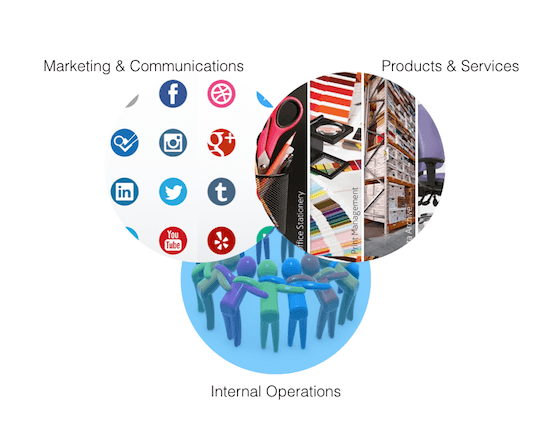Having accompanied a number of senior executives in setting and driving the digital transformation agenda, it strikes me that many people continue to take it from the wrong point of view. Just like BIG DATA is anything and nothing, can be powerful or ineffective, can be big or small, digital transformation is, at times, belittled to nothing more than a new social media strategy or viewed as a behemoth mountain, too hard to scale. I suggest a three prong approach to navigate digital transformation.
Setting your North
Before even starting any digital transformation program, the key is to make sure that the company's vision and strategy are clear Share on X and appropriately shared by the top team. Otherwise, dysfunction very quickly sets in, corrupted by the requisite transparency, cross-functional collaboration and real-time interaction that digital necessarily brings with it.
Navigating your digital transformation agenda
There are 3 key areas that need to be addressed:
- Product/Service: Is the product/service you are selling the right one? The value-added around your product/service needs to be carefully evaluated as part of the business model.
- Marketing/Communications: How can digital enhance the way you communicate to your customers and potential consumers?
- Internal operations: How can digital improve the internal flow of communications, sharing of knowledge, continuous learning, etc.? In short, this is about internal culture.

Any digital transformation program that does not address all three of these components is bound to be less powerful. At the end of the day, they are necessarily intertwined. A new service around your product can be the way you sell it (via eCommerce) and support it (customer service), which will require changes in the way you communicate externally and operate internally.
It is my observation that some chief executives are more focused on the first and second areas. However, the third component (internal operations) is absolutely fundamental to the success of the first two. It’s no good saying that you want to have a better customer service if the internal communication systems (and organizational bureaucracy) have not been adjusted to accommodate the customer expectations.
To work effectively and efficiently, digital transformation requires work inside the company on organization, culture and communications Share on XYour thoughts and reactions are welcome!











Trackbacks/Pingbacks